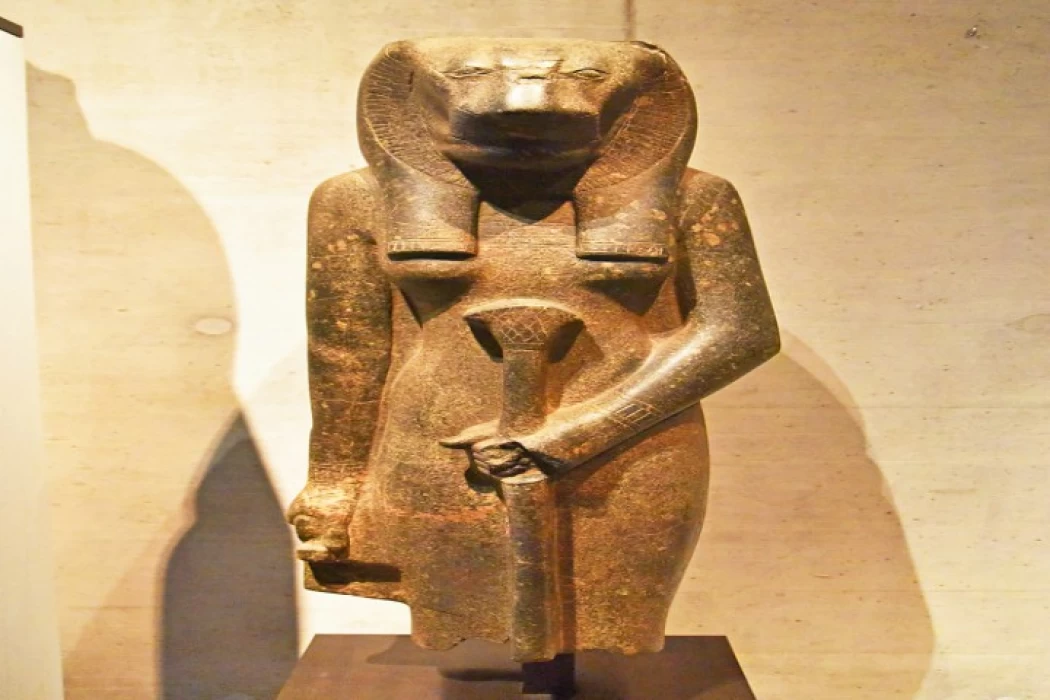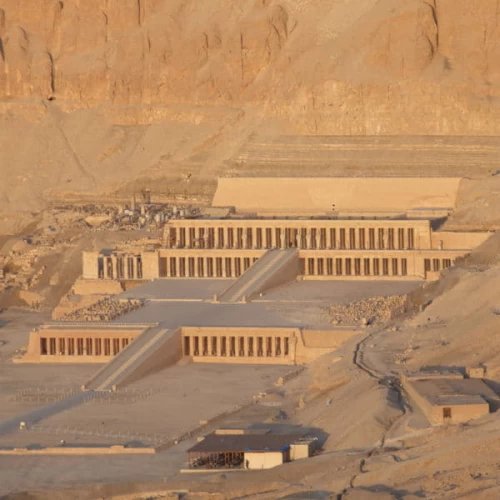
Goddess Sekhmet
Goddess Sekhmet
According to ancient Egyptian religion, Sekhmet is the daughter of Amun Ra, the god of the sun disk and the most important of the gods of ancient Egypt. This deity is depicted with a woman's body, a lioness's head, and a sun disk on top. This goddess always wore a long red robe, symbolizing her roots.
Furthermore, because she was so powerful and feared, she held great importance for King Amenhotep III, who ordered the construction of 365 statues to worship her and thus calm her anger.
This goddess lived up to her name, which means powerful, as she had a dual personality: one was dangerous and destructive, bloodthirsty, and the other protective and healing. Sekhmet brought plagues and diseases. She possessed seven arrows that she used to launch at her enemies. This goddess of war was very fearful of humanity.
On the other hand, she possessed protective and healing powers, primarily to heal human fractures, making her the patron saint of physicians. Sekhmet was known as the goddess of love, arousing passions, being the most beautiful of the Egyptian gods and always splendid.
Furthermore, Sekhmet was known as the eye of her father, Ra, the sun god. Seeing that humans were rebelling and would no longer pay homage to her, he decided to send his daughter to pursue and destroy them. She unleashed her great anger and began to attack those who had turned their backs on her father. Her unstoppable anger was so great and merciless that even the god Amun Ra felt humanity's mercy and, therefore, decided to stop her, but failed.
Amun Ra, therefore, decided to trick her into stopping him, so he ordered her to prepare a red concoction and throw it his way. She drank it thinking it was blood, and got drunk, that's how they stopped Sekhmet's fury.
According to ancient Egyptian religion, Sekhmet is the daughter of Amun Ra, the god of the sun disk and the most important of the gods of ancient Egypt. This deity is depicted with a woman's body, a lioness's head, and a sun disk on top. This goddess always wore a long red robe, symbolizing her roots.
Furthermore, because she was so powerful and feared, she held great importance for King Amenhotep III, who ordered the construction of 365 statues to worship her and thus calm her anger.
On the other hand, she possessed protective and healing powers, primarily to heal human fractures, making her the patron saint of physicians. Sekhmet was known as the goddess of love, arousing passions, being the most beautiful of the Egyptian gods, and always splendid.
Furthermore, Sekhmet was known as the eye of her father, Ra, the sun god. Seeing that humans were rebelling and would no longer pay homage to her, he decided to send his daughter to pursue and destroy them. She unleashed her great anger and began to attack those who had turned their backs on her father. Her unstoppable anger was so great and merciless that even the god Amun Ra felt humanity's mercy and, therefore, decided to stop her, but failed.
The goddess Sekhmet was called “the devourer” because she played a role in the myth of the destruction of humanity. This was one of the most important myths in the history of Egyptian civilization, which tells the story of the god Ra, as she was the daughter of Ra and the eye of Ra, who sent her to destroy his enemies.
She took the form of a female lion and destroyed these human enemies, However, she continued to destroy even the innocent later on, to the extent that the god Ra wanted her to stop, so he carried out a certain trick to prevent her from continuing to destroy all humans.
The name Sekhmet comes from the ancient Egyptian word s, m, which means “strength or power”. The ancient Egyptian name for Sekhmet translates to “(strong or mighty person).”
Moreover, the goddess was also given titles such as “(one) before the one who trembles evil” “Lady of Dread”. In addition, the titles “Lady of Slaughter” and “She Moles” also refer to Sekhmet.
She is the wife of the god "Ptah" in the "Menf" trinity (Ptah; Sekhmet; Nefertum). She is the goddess of oppression in ancient Egypt, the daughter of the god "Ra", and his eye that attacks hostile forces; She is one of the most important goddesses who embodies the eye of the sun god "Ra".















